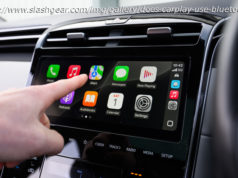For most people, wired headphones are simply too inconvenient to use on a daily basis. The only reason why many people still used wired earphones is that they are incredibly cheap. However, wireless headphones offer an entirely different experience that should not be missed. Here…
For most people, wired headphones are simply too inconvenient to use on a daily basis. The only reason why many people still used wired earphones is that they are incredibly cheap. However, wireless headphones offer an entirely different experience that should not be missed.
Here are some things to consider before buying your next pair of wireless headphones.
Audiophiles are not the only ones who should be concerned about the sound quality of their headphones. Before committing to any single pair of wireless headphones, considering audio quality is of paramount importance.
These days, many wireless headphones are equipped with aptX technology. To put it simply, Bluetooth was never meant for high-quality audio transmissions which means that audio is compressed, making it sound worse.
With aptX, compression is done differently so that audio quality is a lot more similar to CDs. The trick here, however, is that both the headphones and the audio devices (speaker or phone, for example) must support aptX technology.
With all that said, many people will not be able to tell the difference between a $400 pair of headphones and a $40 one. Even if they can discern subtle differences, most people would not be willing to pay such a high premium for what they perceive to be a slight increase in quality.
In reality, these three areas are what most people focus on when looking at wireless headphones, and for good reason. Many users will wear a single pair of headphones for multiple hours every single day so they have to be comfortable and convenient.
Of course, many people will also pay a lot of attention on style. Wireless headphones that do not look good simply do not sell as well as their sleek-looking counterparts.
There are three forms of wireless earphones: in-ear, on-ear, and over-ear. In-ear may be self-explanatory but it is actually the single most innovative area currently with many companies attempting to revolutionize its form and functionality.
On-ear headphones are those that simply rest on top of the ears but do not fully enclose them. In contrast, over-ear headphones enclose the entire ear. The difference between the two is that the latter allows for better sound quality with louder volumes and better bass but may not be as comfortable or as portable.
If you are used to wired headphones, then you are also probably used to controlling things like volume or play/pause with physical buttons along the wire. Wireless headphones, however, can be very different.
Many wireless headphones have controls on the earpieces themselves. Some of them are protruding but most of the modern ones have touch controls instead. A limited number can also be controlled by voice or by external apps.
The control method and style is far more important than you might think. Many manufacturers opt for style rather than functionality and it all depends on your needs. For instance, some of the controls might not be suitable for gym-goers, while others might be perfect for that particular cause.
Another thing to consider is how the headphones can pair with an external device. Most simply use Bluetooth to pair up with your phone or an external speaker but others might also have NFC functionality.
Others yet, such as the MS301 by Mixcder, combine both technologies into one. That means you can pair them up via Bluetooth or by simply tapping an NFC-enabled device (such as your smartphone) onto the headphones.
For those of you who have only ever used wired headphones, the fact that wireless headphones have a limited battery life might be an alien concept. However, this is a necessary part of wireless headphones and something very important to consider.
Most wireless headphones will give you a good few hours of battery life so you will most likely be able to use them for quite a few hours every day. If, for whatever reason, you require extended battery life, however, then you will need to do some more research.
Another thing to consider here is charging time. If you forget to plug your wireless headphones in when you come back from work, then you will not be able to use them the next day.
Though you may be able to use some wireless headphones while they are charging, they will simply not be wireless anymore. That means all of their convenience and portable advantages will no longer be available to you.
Having gone through most of the things you should consider before making a purchase, it is time to talk about price. As with most other things in life, premium wireless headphones come at a premium price.
If you are looking for wireless headphones with great noise cancellation, advanced features, great design, and fantastic sound quality, then you should expect to pay quite a lot of money for the privilege.
But if all you are looking for is a convenient pair of wireless headphones for some simple music listening and/or voice chatting, a cheaper pair will do the trick just fine.
Sit back and let the hottest tech news come to you by the magic of electronic mail.
Prefer to get the news as it happens? Follow us on social media.
Got two minutes to spare? We’d love to know a bit more about our readers. Start!
All data collected in the survey is anonymous.






